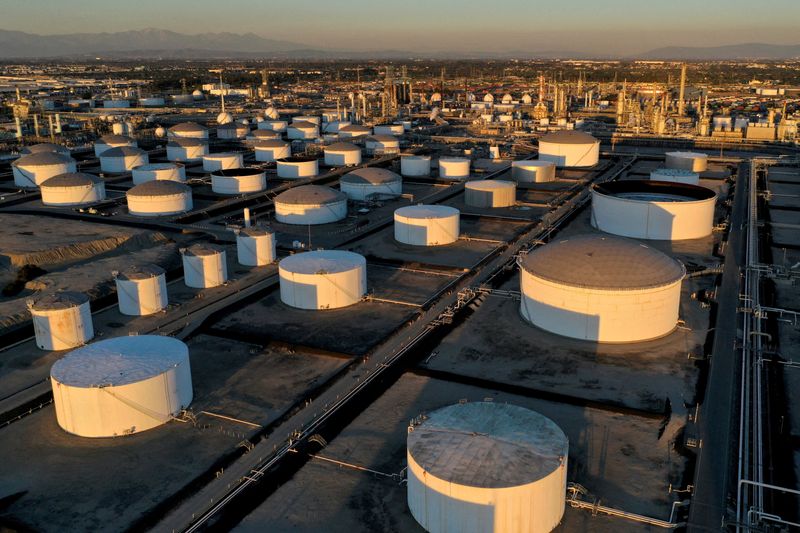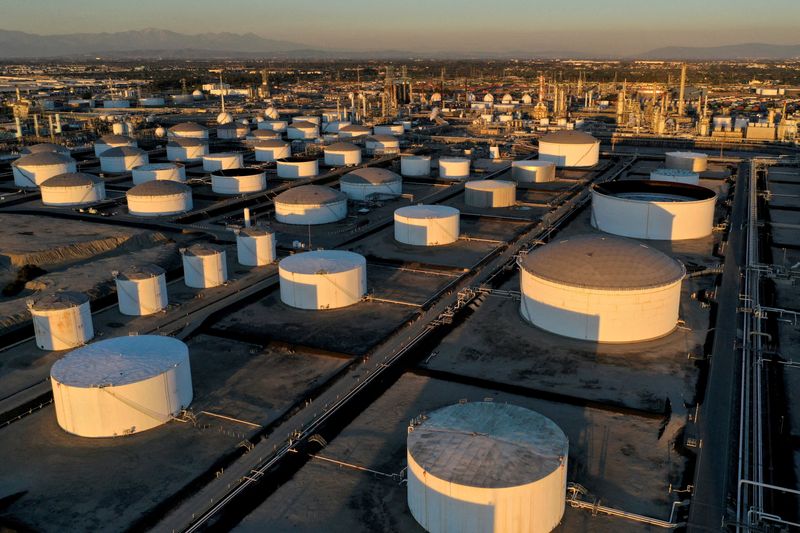
By Arunima Kumar
(Reuters) -Oil prices rose slightly in choppy trade on Monday after last week’s cut to U.S. interest rates and a dip in U.S. crude supply in the aftermath of Hurricane Francine countered weaker demand from top oil importer China.
Brent crude futures for November edged up by 16 cents, or 0.21%, to $74.65 a barrel by 1011 GMT. U.S. crude futures for November were up 21 cents, or 0.30%, at $71.21.
Oil prices were buoyed last week by the U.S. Federal Reserve’s decision to cut interest rates by 50 basis points and signal further cuts by end of the year, though weaker demand from China is limiting the upside, said Charalampos Pissouros, senior investment analyst at brokerage XM.
Both oil benchmarks rose more than 4% last week.
“Oil looks rangebound despite the uplift to risky asset prices from an outsized policy rate cut by the Fed last week,” said Harry Tchilinguirian, head of research at Onyx Capital Group
“The market will look to flash purchasing managers’ index (PMI) releases in Europe and the U.S. for economic direction, and if these disappoint, then there is likely to be downward pressure developing on oil prices.”
Euro zone business activity contracted sharply and unexpectedly this month as the bloc’s dominant services industry flatlined while a downturn in manufacturing accelerated, a survey showed on Monday.
A softer economic outlook from top consumer China capped further gains.
“There was some hope earlier this morning that some additional Chinese monetary stimulus is likely in the short term, but the latest PMI out of Europe switched market sentiment from positive to negative,” said UBS analyst Giovanni Staunovo.
“I would expect oil to benefit this week from a large U.S. crude draw as result of elevated U.S. crude exports.”
However, heightened conflict in the Middle East could curtail regional supply.

The Israeli military launched its most widespread wave of airstrikes against Iran-backed Hezbollah, targeting Lebanon’s south, eastern Bekaa valley and northern region near Syria simultaneously after nearly a year of conflict.
“The market could continue to react to the escalating tensions in the Middle East as confrontations between Israel and Hezbollah continue. Heightened concerns over a broader conflict disrupting regional oil supplies could add upward pressure to the market,” said BDSwiss market strategist Mazen Salhab.
This post is originally published on INVESTING.



